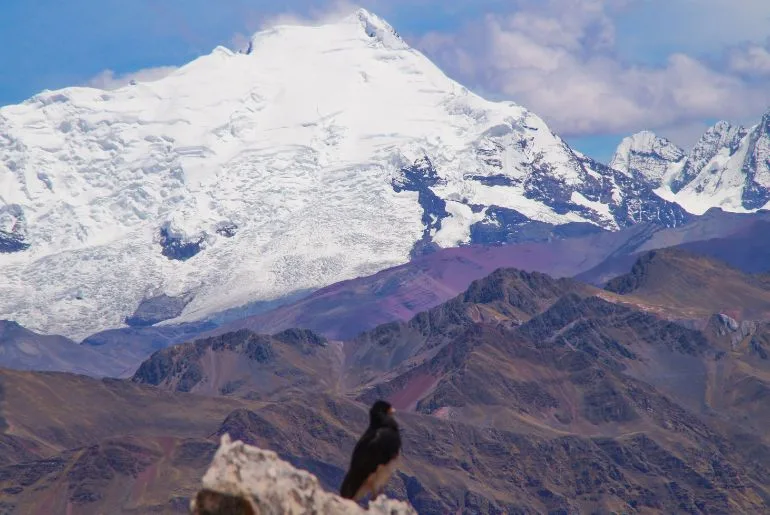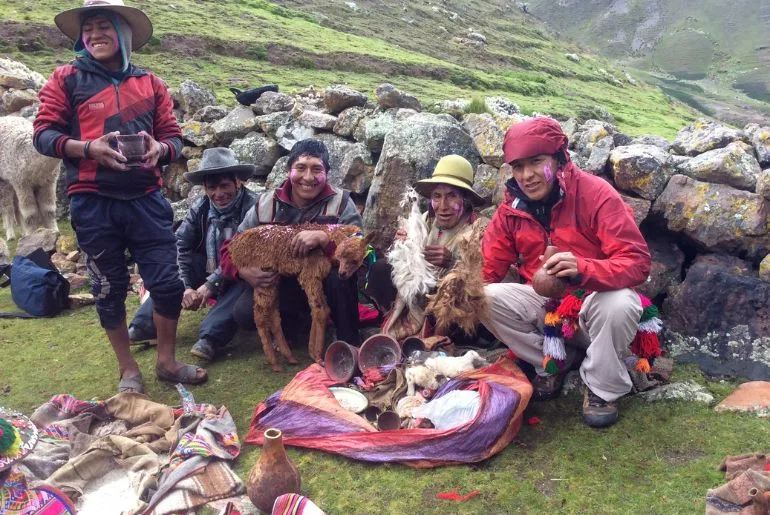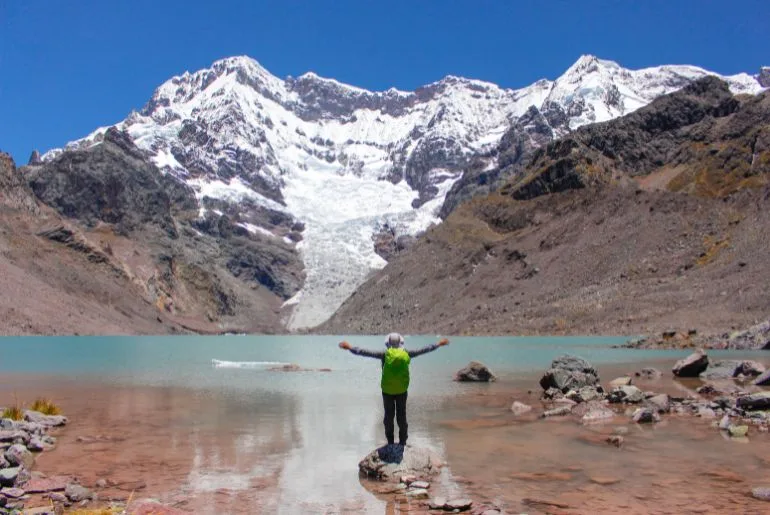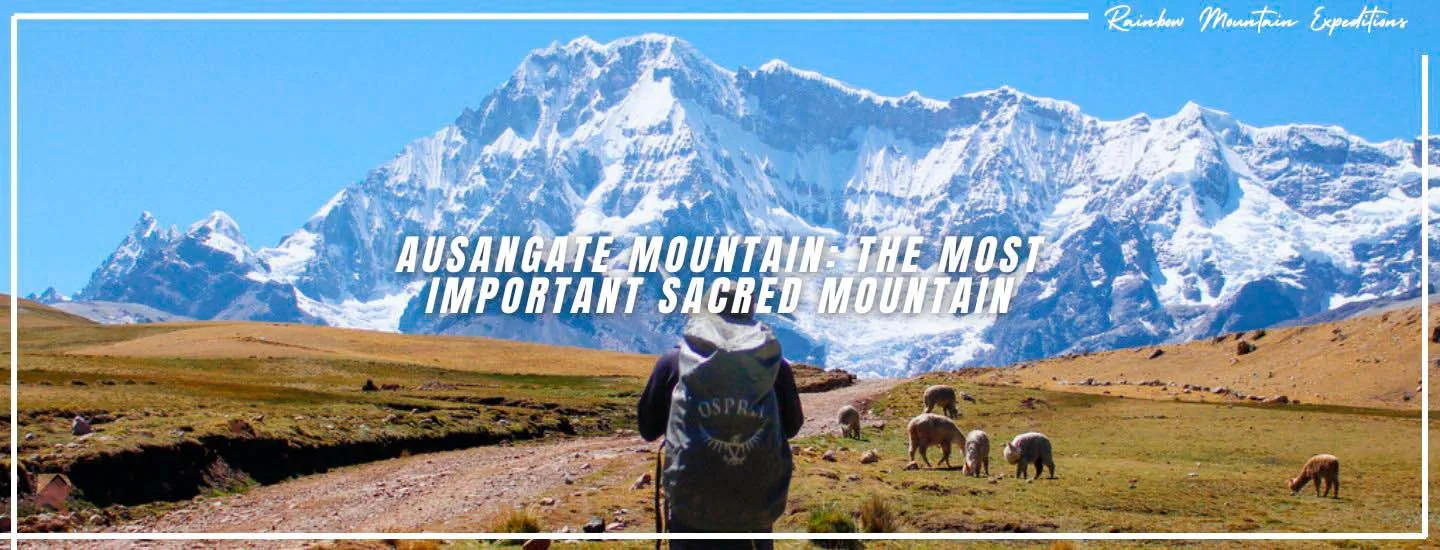Ausangate Mountain: The Most Important Sacred Mountain
Ausangate Mountain is one of the most important sacred mountains for the Incas and Andean peoples, who placed profound trust in it. It is believed that in ancient times, humans maintained a strong spiritual connection with the Apus, the sacred mountains that not only protected their surroundings but also granted life and healed ailments that conventional medicine could not treat. Below are some aspects that continue to astonish humanity.
1. Spiritual Powers of Ausangate
The Apus are not mere mountains or valleys. In the Andean worldview, these entities have a direct influence on the life and destiny of those who inhabit their domains. Ausangate, being one of the most powerful Apus, has been attributed with several gifts, such as:
Healing
It was believed that the Apus possessed a special energy capable of harmonizing the body, mind, and spirit. Those who approached them with faith and respect received their protection and healing. It was also believed that some illnesses had a spiritual origin, caused by negative energies or imbalances in the ayni (principle of reciprocity). The Apus, as protectors, helped dissipate these forces and restored the person’s well-being.
Control of the Weather
The Apus, sacred spirits of the mountains in the Andean worldview, control the weather because they are the guardians of snow-capped peaks and water sources, regulating rainfall, winds, and seasons to ensure natural balance. As intermediaries between the sky and the earth, their influence determines the fertility of fields and the stability of the environment. It is believed that their favor depends on rituals and offerings, as when honored, they bring rains at the right time and protect against natural disasters; however, when neglected, they may send droughts, storms, or frosts. Their power not only regulates the climate but also maintains harmony between humans and nature, ensuring survival in the Andes.
Speaking
In the Andean worldview, it was believed that the Apus could communicate with humans, but not directly or audibly. The connection was established through dreams, visions, or natural signs, such as the behavior of animals, the wind, or the movement of stars, which were interpreted as messages sent by the Apus. Shamans or yatiris acted as intermediaries, guiding the community based on what the Apus indicated. Additionally, during rituals of payment to the land or q’oa, Andean peoples offered tributes and requested favors from the Apus, hoping for responses in the form of changes in the weather or prosperity in crops, as a sign that the Apus were listening and responding to their requests.
Punish
The Apus could “punish” people or communities who failed to fulfill their spiritual responsibilities, particularly if they did not perform the proper rituals or offerings to maintain balance with nature. This “punishment” was not punitive in the traditional sense but rather a way to restore order and harmony. It was believed that the Apus could send natural disasters such as droughts, storms, frosts, or even illnesses as responses to the disharmony between humans and nature.
Create Wonders
The Apus, as sacred spirits of the mountains, were seen as divine beings with the power to create wonders due to their connection with nature and cosmic balance. As guardians of natural elements like water, climate, and the fertility of the land, they could manifest wonders such as stunning landscapes, water springs, and fertile lands. Moreover, their essential role in maintaining the balance between the earthly, spiritual, and underworld realms gave them the ability to intervene in the creation of life and abundance.
Protect
The Apus protected everything around them because they were considered the spiritual guardians of the mountains and valleys, and in the Andean worldview, mountains were not only sources of life and resources but also centers of sacred power. This protective bond stemmed from their essential role in the balance between humans, nature, and the spiritual world. Firstly, the Apus were seen as deities that maintained cosmic order, ensuring the prosperity and well-being of the communities living near them.

2. Connection of Ausangate with the Andean World
Ausangate was not only important in the past; it remains a point of connection between Andean spirituality and daily life.
Connection with the Incas
The connection between the Incas and the Apus was deeply spiritual and cultural, as the Apus were considered protective gods responsible for maintaining balance between the physical and spiritual worlds. Moreover, they were regarded as one of the most important guardians of the Tawantinsuyu, and tributes and ceremonies were performed in their honor. However, not all Incas had the ability to communicate with the Apus; the only one who could communicate with them was the Sapa Inca (the legitimate ruler of the Tahuantinsuyu).
Connection with the Andean People
The connection between the Andean people and Ausangate, one of the most sacred and revered mountains of the Andes, was profoundly spiritual and symbolic. For the Andean peoples, especially those living in the Cusco region, Ausangate was not just a mountain, but a powerful Apu, considered a guardian and protector of life, land, and people. Today, the Andean communities continue to venerate Ausangate as their protector. The relationship with the mountain remains alive through rituals, pilgrimages, and spiritual practices.

3. Rituals and Offerings to Ausangate
The devotion to Ausangate has endured through time.
In the Past
In Inca times, offerings to Ausangate were deeply spiritual rituals in which priests or yatiris conducted ceremonies at sacred sites, such as the mountaintop or its surroundings. The Incas offered food, drinks, textiles, and occasionally animal sacrifices like llamas, to thank the sacred mountain and ask for protection, health, and prosperity. These rituals took place during important festivals like Inti Raymi, and temples and sanctuaries dedicated to Ausangate were built, where local inhabitants also made offerings, seeking to maintain balance with nature and ensure the blessing of the Apu.
In the Present
Today, Andean communities near Ausangate continue to honor the mountain through the Qoyllur Rit’i, an annual pilgrimage in which thousands of people ascend the mountain with offerings of food, coca leaves, and candles, as a sign of respect and devotion. They also continue to perform rituals of gratitude and requests for prosperity, health, and protection, maintaining the tradition of offering products such as corn, potatoes, and traditional drinks. The concept of ayni (reciprocity) remains essential, as people continue to honor Ausangate in an act of reciprocity, hoping the mountain will return well-being and balance to their lives.
4. The Paths of the Royal Road
Ausangate is not alone; it is part of a network of roads and sacred mountains that have been fundamental to Andean history and spirituality.
Ausangate
- As the main Apu, Ausangate is a pilgrimage destination and a key point within the Andean worldview.
Qhapaq Ñan
- This ancient Inca road system connected the most important points of the Tawantinsuyu, passing through sacred mountains like Ausangate.
Salkantay
- Sibling to Ausangate, Salkantay is also a revered Apu and forms part of trekking routes that combine adventure with spirituality.
Cosmos
- Ausangate’s relationship with the stars is key in Andean tradition. Many ceremonies were held on dates aligned with astronomical events.
5. Why Was Ausangate Mountain so Important?
Since ancient times, Ausangate has been a fundamental mountain for Andean life. It provides water, spiritual guidance, and serves as a symbol of resistance and connection to the sacred. Its imposing presence is a reminder that nature and spirituality are deeply intertwined in Andean culture.

6. Ausangate Mountain in the Present Day
Despite the passage of time, Ausangate remains a spiritual and cultural reference. However, only a few individuals can communicate with it directly.
The Alto Misayoq (Shamans)
The alto misayoq are Andean shamans with the gift of spiritual connection. It is said that they can communicate with the Apus and perform rituals to interpret their messages. These figures continue to play a key role in Andean tradition, ensuring that the teachings of Ausangate are not lost over time.
Related posts
Ausangate Hike: Health Benefits of Hiking Up
Ausangate’s Spiritual Essence: A Journey of Self-Discovery
How challenging is the Ausangate Trek?
Legends and Myths of the Origin of the Inca Empire
The Apus and Their Significance in Andean Culture in Peru
The Inca Road: What You Didn’t Know About the Qhapaq Ñan







